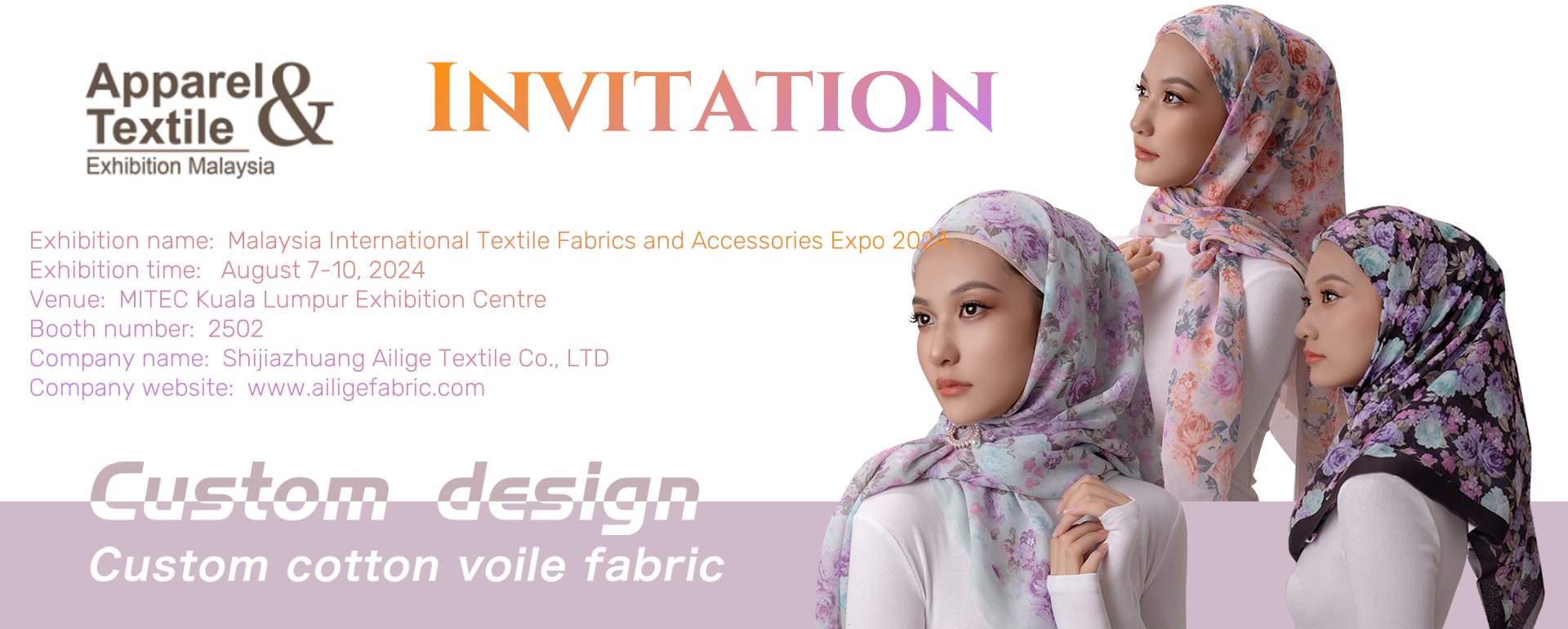Top Cotton Voile Fabric Supplier - JinLai Fabric
Top Cotton Voile Fabric Supplier - Jinlai Fabric
Jinlai Textile is a leading cotton voile (polyster voile) fabric manufacturer, producing up to 50 million meters of voile grey fabric annually, meeting the global
market demand for Muslim women's headscarves. And can provide high-quality and affordable fabrics for headscarf brands at all levels.
Jinlai Textile's selected cotton voile fabric can be used to make dyed scarves, printed scarves, embroidered scarves, diamond scarves, etc. Cotton voile is a light,
soft, and breathable fabric that is perfect for Muslim women's scarves. The cotton voile fabric produced by Jinlai Fabric is easy to use and can create beautiful
effects. They provide fast shipping and excellent customer service. Check out their website, www.jinlaifabric.com, for all your cotton voile fabric needs. Choose
Jinlai Fabric for your next project and experience the joy of customization with high-quality materials.
Section 1: Manufacturing process of Cotton Voile Fabric
Cotton voile fabric is made from high-quality cotton fibers that are combed and twisted to create a fine, even thread. The cotton yarn is then woven using a variety of techniques to create a delicate, sheer fabric that has a soft and silky texture. The fabric is finished by washing, bleaching, and dyeing, to give it a more uniform appearance and improve its durability.
Section 2: The impact of different types of weaving machines on product quality
There are two main types of weaving machines used to produce cotton voile fabrics: Shuttle looms and Air jet looms. Shuttle looms were the traditional looms used in the past, and they are still used today to create high-quality fabrics that are suitable for a wide range of applications. These looms produce fabrics that are characterized by a more substantial weight and a tighter weave. As a result, they are less prone to snagging and fraying but do not have the same level of drape and softness as fabrics produced on air jet looms.
Air jet looms, on the other hand, are modern weaving machines that use air pressure to shoot the warp yarns across the weft yarns to create a more open and lighter fabric. This results in a fabric that has a more delicate texture and drape compared to shuttle-loom fabrics. However, it is more prone to snagging and fraying due to the looser weave.
Section 3: Common defects in fabrics woven with different types of machines
Fabrics woven on a shuttle loom tend to have fewer defects compared to those produced on an air jet loom. The common defects in fabrics produced on a shuttle loom include broken or missed yarns, skipped stitches, and uneven selvedges. On the other hand, fabrics woven on an air jet loom are prone to defects such as uneven tension, creased or poorly formed selvedges, and broken or missing yarns.
Section 4: The main applications of Cotton Voile Fabric
Cotton voile fabrics are used in a wide range of applications due to their lightweight and breathable nature. They are commonly used to make dresses, blouses, and skirts for women, as well as shirts and shorts for men. Additionally, cotton voile fabric is popular for use in home decor applications, such as curtains, drapes, and bedding.
Conclusion:
As a leading cotton voile fabric supplier, Jinlai Fabric has a reputation for producing high-quality fabrics that meet the needs of customers worldwide. Cotton voile fabric has a delicate and diaphanous feel that lends itself well to a wide range of applications. The use of different types of weaving machines can have a significant impact on the final product, and each machine has its strengths and weaknesses. Despite the potential for defects, cotton voile fabric remains a popular choice for a wide range of applications, thanks to its soft handle, lightweight feel, and breathability.




